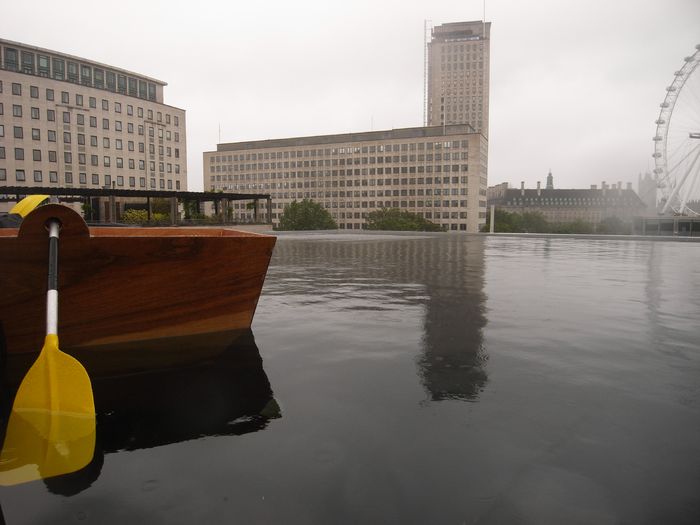Gelitin
Normally, Proceeding and Unrestricted With Without Title
Hayward Gallery, London, UK
PsychoBuildings - Artists Take On Architecture
normally, proceeding and unrestricted
The outdoor galleries are filled with water. Like an infinity pool the water goes all the way to the rim and is permanently overflowing. A wobbly platform with seats is floating in one corner. It is hidden a little so one can not see it right away coming up from the stairs. The floating platform is the home of the boats. There are three .
They are small and made for two people facing each other and are almost as deep as they are long . The boats are pulled far down into the water by 200kg of sand that was poured into each. So when you row the water is around your belly-level and the rest submerged beyond water-level . You are sitting more in the water than above. By the proximity of your eyes to the water surface, the less steep angle of vision makes it more reflective, mirroring the sky and the top ends of buildings. The boats are not built for fast rowing. This reduced speed extends the surface of the water as it takes a longer time to reach the rim of the pond where the reflection meets the sky. Trough the black liner and the reflections on the surface one does not realize that the pond is only about a meter deep. When it rains and wind whips up the water it feels like being in the open sea…
The boats where small and very shaky, so you always are aware of your body position. If you move the wrong way you might sink. When you are washed into a boat with somebody, trough traveling on this micro-ocean you can establish a very intimate contact, as you share the same vessel and are held up by the same structure, which both of you have to navigate and keep in balance.
“You are forced to be sensitive to the other person's position and movement in relation to your own. That makes you face the other person, first as a thing, and then as a human being with shifting moods, which could possibly change the psycho-physical balance within the boat. You must establish relations of trust and interdependence without depending on your regular social contexts. The merely physical perception of your body as a constitutive part of the condition that makes the boat afloat and mobile helps you understand your body as a sum of shifting conditions that change constantly in adjustment to external pulls, pushes, impacts and affects. That understanding of your body as a temporary sum of shifting positions, actions, and perceptions is the basic point of Spinoza's understanding of human being as an ever-changing construction of correlations between mind and body.”(*from a conversation with Midori Matsui)




